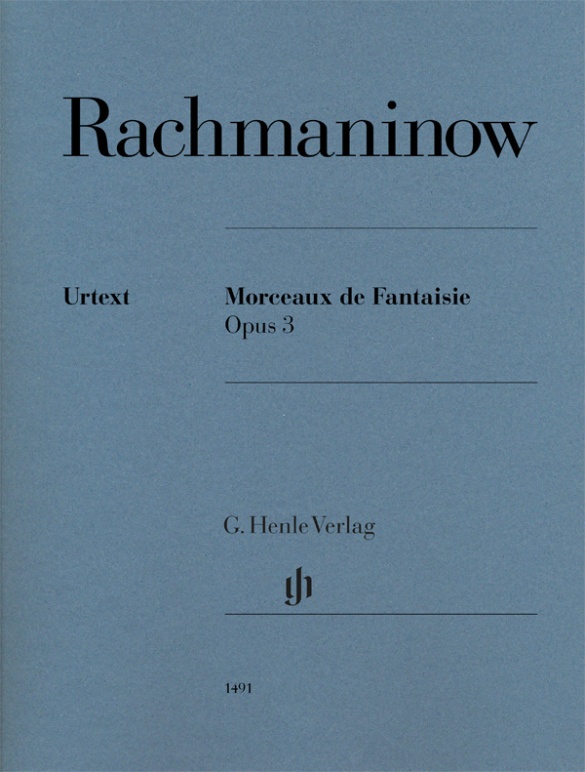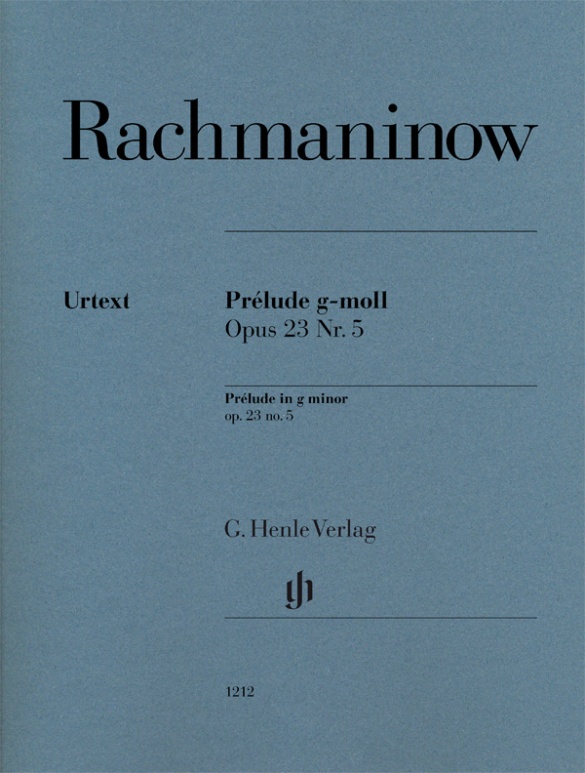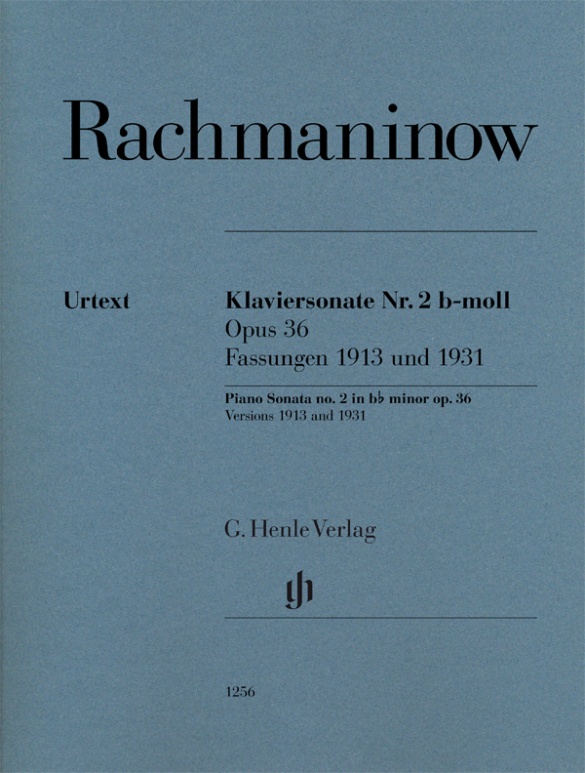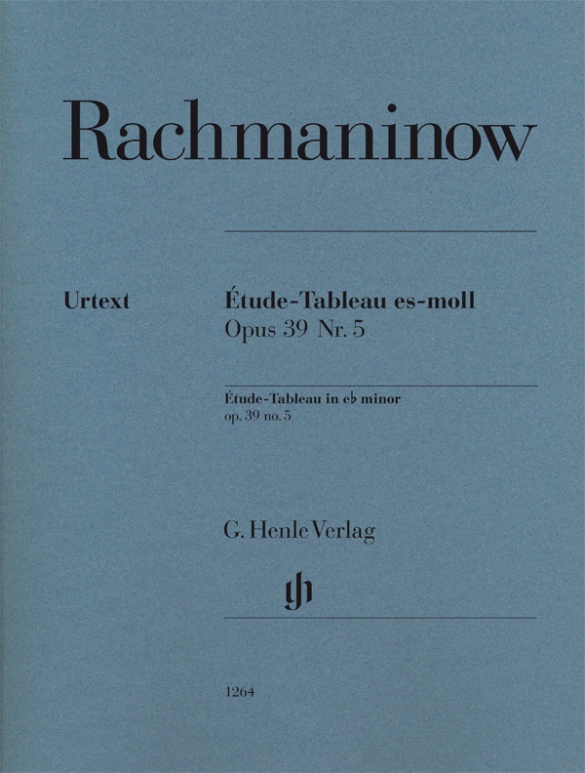Sergei Rachmaninoff
Morceaux de Fantaisie op. 3
Sergei Rachmaninoff embarked on his compositional career with five short piano pieces, which he presented for the first time in December 1892 in a concert in Charkow (now Kharkiv). The second piece, with the unremarkable title “Prélude”, is the famous Prélude in C sharp minor which was soon played throughout the world and was to become Rachmaninoff’s most-performed encore. But the other pieces, quite different in character, continue to enjoy general popularity amongst pianists to this day. For they are all “typical” Rachmaninoff and at the same time technically easy to master, even for amateurs. The edition is based on the first edition and the autograph preserved in the Glinka Museum, Moscow. As well as the original version of 1892, this Urtext edition also includes two revisions which Rachmaninoff made of Mélodie and Sérénade almost 50 years later in the USA, thereby allowing a direct insight into his changed pianistic ideas. The fingering is by the Rachmaninoff expert Marc-André Hamelin.
内容/詳細
作曲家について
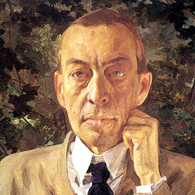
Sergej Rachmaninow
Composer and pianist who continued and expanded the late-Romantic tradition; he prepared the way for Prokofiev and Shostakovich. His oeuvre comprises orchestral works, piano pieces, choral works, several operas, and numerous songs.
| 1873 | Born in Semyonovo on April 1. From 1880 receives professional instruction in music. |
| 1885–92 | Studies music at the Moscow Conservatory. |
| 1890–92 | Piano Concerto No. 1 in F-sharp minor, Op. 1, with the diminished fourth in the main theme typical of his style. |
| 1892 | Successful performance of his one-act opera “Aleko” (a graduation work). Prelude in C-sharp minor for piano. |
| 1897 | Unsuccessful premiere of the Symphony No. 1, Op. 13 (with abrupt contrasts). First experiences as an opera conductor at Moscow’s Mamontov Theater. He becomes acquainted with Fyodor Shalyapin, later his friend. |
| 1900/01 | Composition of the Piano Concerto No. 2 in C minor, Op. 18, in a modified style (broad melodic arcs, transparent compositional style). |
| 1904–06 | Appointed conductor at the Bolshoi Theater in Moscow. |
| 1906 | Premieres of the operas “The Miserly Knight,” Op. 24, and “Francesca da Rimini,” Op. 25. |
| 1907 | Symphony No. 2 in E minor, Op. 27, with whimsical figuration in the woodwinds; Piano Sonata No. 1 in D minor, Op. 28. |
| 1909 | Piano Concerto No. 3 in D minor, Op. 30; symphonic poem “The Isle of the Dead,” Op. 29 |
| from 1910 | More complex compositional technique (enhanced polyphony, ambiguous harmonies, fast rhythmic alterations) in Thirteen Preludes for piano, Op. 32; “Études-tableaux,” Op. 33 (1911); Fourteen Songs, Op. 34 (1910–16). |
| 1917 | Rachmaninoff leaves Russia and lives in Stockholm, Copenhagen, the United States (career as pianist), and Switzerland. |
| 1926/41 | Piano Concerto No. 4 in G minor, Op. 40. In 1935/36, Symphony No. 3 in A minor, Op. 44. |
| from 1939 | He emigrates permanently to the United States. |
| 1943 | Death in Beverly Hills on March 28. |
校訂者や運指担当者について

Dominik Rahmer (校訂)
Dr. Dominik Rahmer, born in 1971 in Mainz, studied musicology, philosophy and maths in Bonn. He did his Magister Artium in 1999 and his doctorate in 2006 with a thesis on the music criticism of Paul Dukas.
From 2001 to 2011 he was employed at Boosey & Hawkes/Bote & Bock in Berlin, where he also worked on the Critical Edition of the Works of Jacques Offenbach (OEK). Since 2011 he has been an editor at G. Henle Publishers in Munich, with a particular focus on French and Russian music and works for wind instruments.
.jpg)
Marc-André Hamelin (運指)
製品安全に関する情報

G. Henle Verlag
製品の製造元に関する情報はこちらでご覧いただけます。G. Henle Verlag
Forstenrieder Allee 122
81476 München
info@henle.de
www.henle.com
Henle’s reasonably-priced edition includes both original and revised versions of the pieces, and since Rachmaninov provided minimal fingering, additional suggestions are supplied by Marc-André Hamelin. Rachmaninov didn’t write easy music, unfortunately, so although this is his easiest collection of solos, they are all around Grade 8 (ABRSM).
Pianist, 2023Mit der Neuedition der Morceaux de Fantaisie erhält der interessierte Pianist eine auf breiter Quellenbasis fußende Urtext-Edition, die ihm viel Freude bereiten wird. Und dass ein so begnadeter Virtuose wie Marc-André Hamelin die Fingersätze beigesteuert hat, ist natürlich molto grandioso.
Piano News, 2023... i Pezzi sono ideali per un primo approccio al mondo musicale pianistico di Sergej.
Suonare News, 2023Der kanadische Pianist Marc-André Hamelin ... hat sich auf meisterhafte Art der Fingersätze angenommen. Bei ihm liegt diese Aufgabe in den besten Händen. Eine ansprechende Publikation, Druck und Layout sind natürlich vollkommen zufriedenstellend.
Pianist, 2023おすすめ
autogenerated_cross_selling
このタイトルを含む他の版
このタイトルを含む他の版


